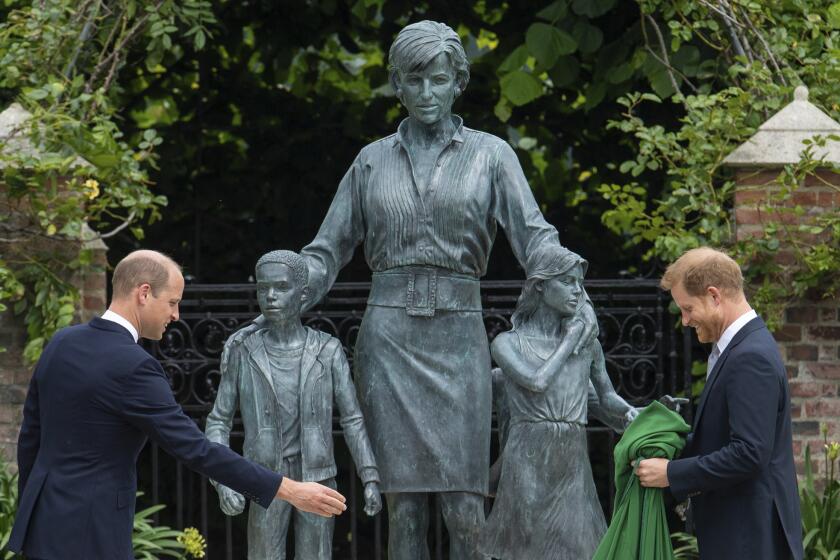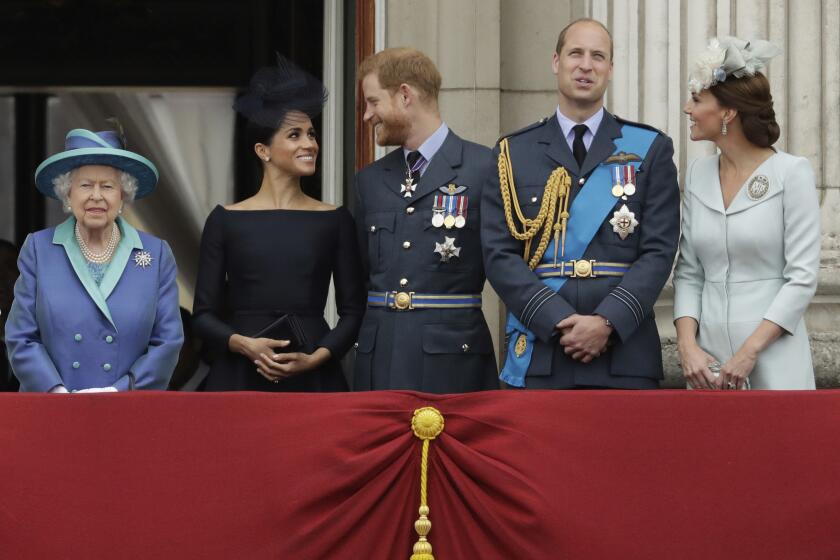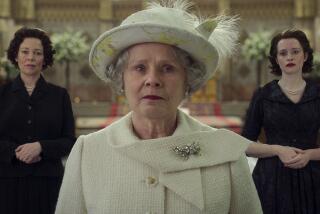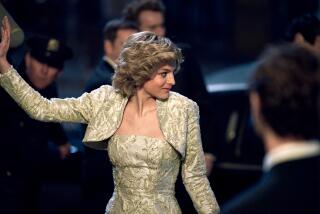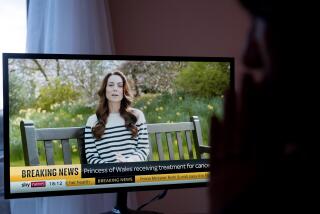Commentary: Queen Elizabeth lived nearly a century. The most striking image of her for me is from this year
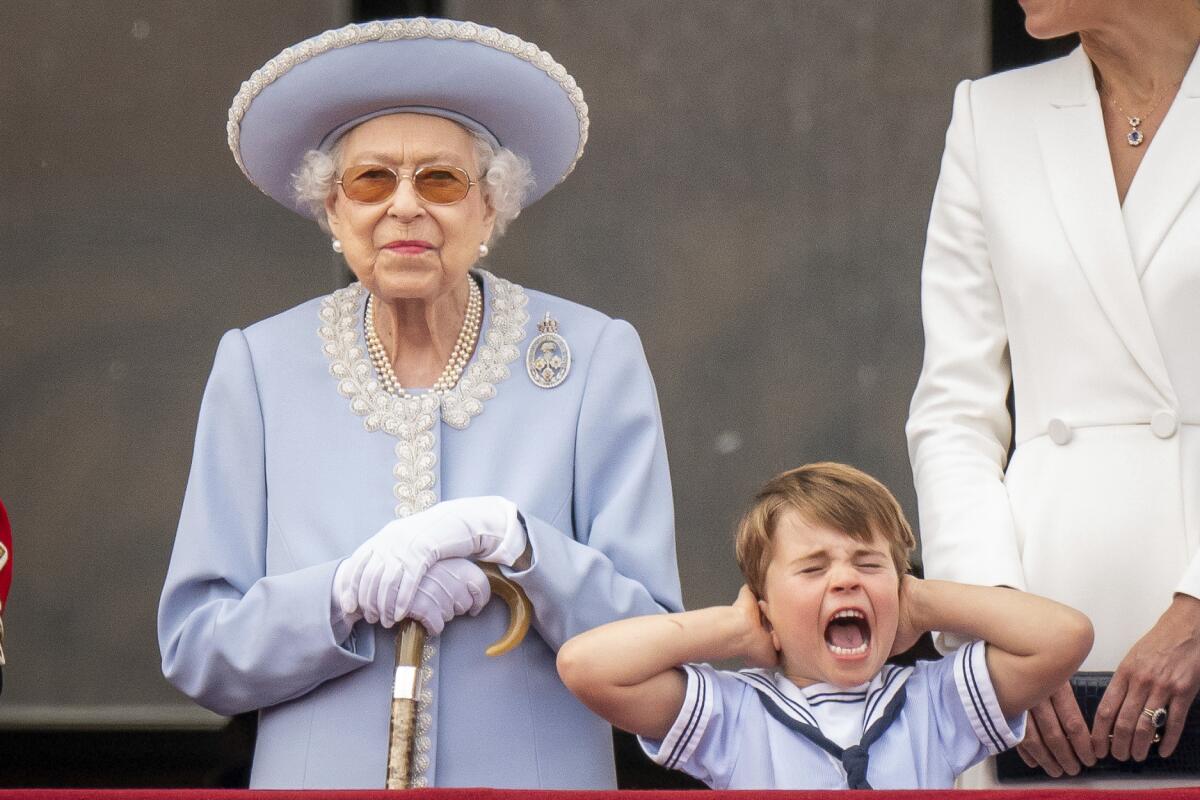
Two of my favorite glimpses of Queen Elizabeth II nearly bookend her life. On her 21st birthday, still just the daughter of a king, she gave a radio broadcast pledging to the British people in a heartbreakingly young voice “that my whole life, whether it be long or short, shall be devoted to your service.”
Earlier this year, celebrating 70 years as queen in a Platinum Jubilee extravaganza full of gun salutes and airplane flyovers, she stood on a Buckingham Palace balcony, surrounded by a sedate invitation-only group of family, and ignored the ritual for a while to chat up the youngest and rowdiest of the bunch — her 4-year-old great-grandson, Prince Louis.
Elizabeth just seemed game, all the way to the end of her life on Thursday at the age of 96. Well into her 80s, she appeared in a hilarious video skit with Daniel Craig for the opening ceremony of the 2012 Olympics in London.
Diana, princess of Wales, died 25 years ago but is still popular. There has been a surge of movies, books, documentaries and TV shows about her. We shouldn’t be surprised.
Even her working wardrobe, generally fusty and inclusive of a clunky handbag, appeared to get a little more stylish as she got older. Think cantilevered-brim hats that you might expect to see Kate Middleton wear. After all, the queen did pop up, at the age of 91, in the front row of a London Fashion Week show next to Vogue editor Anna Wintour. Her granddaughter Beatrice wore a dress of Elizabeth’s — a Norman Hartnell gown — slightly retooled for her own small 2020 wedding.
For all Elizabeth’s devotion to duty and tradition, there was something timeless about her. In an address near the end of 1992, when her son Andrew separated from his wife, Sarah Ferguson; her daughter, Anne, divorced; the marriage of her son Charles and Diana was publicly crumbling; and Windsor Castle caught fire; she forlornly admitted it had been a horrible year. (She did say it in Latin, though, calling it an “annus horribilis.”) She acted like a proud grandmother at the 2018 wedding of her grandson Prince Harry to the American biracial actress Meghan Markle (three descriptors that would have been unheard of in a royal daughter-in-law decades ago). And she beamed as a proud great-grandmother, looking down at Harry’s first son, Archie, cradled in Meghan’s arms, with Meghan’s Black mother, Doria Ragland, standing there smiling as well.
When Elizabeth was stuck in a rut of tradition, she got herself unstuck. After Diana, the princess of Wales, died 25 years ago, the queen was vacationing at Balmoral, her Scottish castle (where she died) and didn’t believe protocol for an ex-royal family member required her returning to London. But facing vocal pressure from a grieving public, she returned to Buckingham Palace and gave a speech essentially telling the public, “I get it.”
Elizabeth II will celebrate 70 years as the ruling monarch of Britain. Whether she should be the last is a question, but it doesn’t need an answer now.
“I, for one, believe there are lessons to be drawn from her life and from the extraordinary and moving reaction to her death,” she said in that televised speech.
I watched that speech in a pub in the countryside near Diana’s ancestral home outside London with a group of locals I was interviewing for a story on the aftermath of her death. In all honesty, I may have been a little more moved by that speech than they were.
But I am one of those Americans who are fascinated by the British royal family. I never met the queen. I never even saw her in person. But her mark on the royal family was unmistakable.
Whether you think the monarchy is a good idea or a bad idea, Elizabeth had become something of a cultural figure on a stage well beyond the United Kingdom. It’s hard — no, it’s unfair — to think that her son, the man known for decades as Prince Charles, now King Charles III, will match her impact. He won’t have the job as long as she had it.
I remember her speech to her countrymen and -women in the dark, scary pre-vaccine, death-filled days of the COVID pandemic in April 2020. She was stoic and straightforward, not blustery, not political. She offered comfort and faith in the future as people everywhere were held in the grip of a global menace.
In a reassuring call to believe in better days, she said: “We will meet again.”
More to Read
A cure for the common opinion
Get thought-provoking perspectives with our weekly newsletter.
You may occasionally receive promotional content from the Los Angeles Times.
